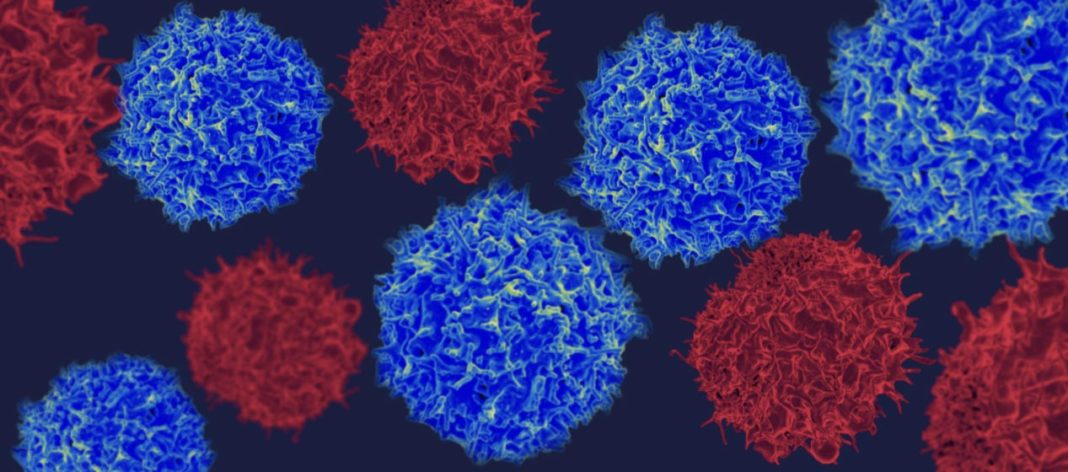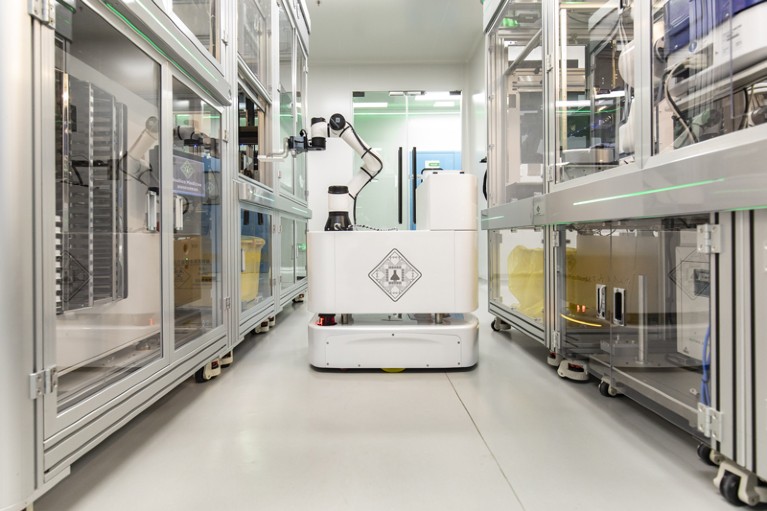Oozing from ancient rock is a substance that has been used for centuries in healing.


By Sheramy Tsai
3/11/2024
Updated:
3/11/2024PrintX 1
0:00
12:40
With a history as rich as its mineral content, shilajit offers a glimpse into nature’s pharmacy, offering benefits from enhanced fertility to increased energy. As science begins to unravel the mysteries of this ancient elixir, questions arise about its efficacy and potential as a natural health solution.
Nature’s Ancient Elixir
High in the Himalayas, shilajit seeps from the rocks, a tar-like byproduct of centuries-old decomposed plant matter. With a composition rich in minerals, fulvic acid, and humic acids, it occupies a revered spot in Ayurvedic medicine as a “Rasayana,” aimed at promoting longevity and revitalizing the body and mind.
Ayurvedic doctor Sruthi Bhat praised shilajit for its broad spectrum of health benefits, telling The Epoch Times, “The unique composition of shilajit provides a plethora of health benefits.” According to Ms. Bhat, shilajit supports cardiovascular health, aids digestion, and balances hormones, among other benefits. “Shilajit serves as a versatile tonic for overall health and well-being, targeting multiple systems of the body to promote vitality and resilience,” she shared.
Scientific scrutiny supports these claims, revealing shilajit’s composition to be incredibly diverse, with over 85 minerals, vitamins, and phytonutrients. Fulvic acid, a key component of shilajit, is noted for its ability to improve nutrient absorption, elevate energy levels, and facilitate the body’s detoxification. Fulvic acid is critical in transporting nutrients into the cells and expelling toxins, significantly enhancing energy and overall health.
Shilajit, also called salajit, shilajatu, mumie, mineral pitch, and mummiyo, is sourced from diverse locations such as India, Nepal, Russia, and Chile. Research suggests that its health benefits differ based on the geographical origin of the substance.
Dubbed the “destroyer of weakness,” shilajit is prominent in many cultures. According to an ancient Ayurvedic text, the Cha raka Samhita, “There is no curable disease in the universe that is not effectively curable by shilajit, when administered at the appropriate time, adopting the prescribed method.”
Ayurveda’s Golden Elixir for Modern Wellness
In Ayurvedic tradition, shilajit is classified into four types: svarna (gold), rajat (silver), tamra (copper), and loh (iron), each valued for specific therapeutic benefits. Gold shilajit, known for its rejuvenating effects, is especially esteemed. “This form of shilajit is believed to promote vitality, longevity, and overall well-being by balancing the doshas and stimulating cellular regeneration,” Ms. Bhat notes.
According to Ayurvedic principles, the various forms of shilajit target distinct health issues. Silver shilajit is used for its cooling effects, while copper shilajit is favored for its warming properties that boost vitality and metabolism. Iron shilajit is credited with grounding and is often recommended for fighting fatigue and improving endurance.
RELATED STORIES
Environmental Nutrition: What Is Ayurveda?
1/4/2024

Intro to Ayurvedic Herbs – Learn Which Ones Works Best for You
5/12/2023

Ancient Ayurvedic methodologies emphasize the critical role of purifying shilajit. It undergoes extensive purification to remove contaminants, such as heavy metals, and to enhance its therapeutic effects. Dr. Bhat points out, “Purification of shilajit stands as a pivotal step before its medicinal use.” A common purification process for shilajit includes heating it in an herbal decoction called triphala or in cow’s urine, then filtering and drying the mixture.
“Shilajit can be administered with various anupanas (carriers) to enhance its therapeutic effects,” explains Ms. Bhat. These carriers may include milk, ghee, and or honey.
Six Potential Benefits of Shilajit
Although shilajit has been a staple in traditional medicine for centuries, modern science is just beginning to explore its reported health advantages. Beyond its potential to address cancer, cardiovascular disease, and insomnia, shilajit is also making strides in these six key areas:
1. Enhances Energy and Athletic Performance
Shilajit is making waves for its ability to bolster physical and mental energy. The secret lies in its capacity to enhance mitochondrial efficiency, essentially turbocharging the body’s cellular engines.
Shilajit’s active components optimize mitochondrial function, enabling a more effective conversion of nutrients into energy. When combined with CoQ10, an antioxidant found naturally in the body, shilajit may significantly enhance stamina and endurance.
Sidney Stohs, who holds a doctorate in biochemistry, highlights in his research, “Animal and human data support its use as a ‘revitalizer,’ enhancing physical performance and relieving fatigue with enhanced production of ATP.”
Athletes and individuals enduring fatigue have noticed as evidence mounts in favor of shilajit’s role in enhancing physical performance and tackling conditions such as chronic fatigue syndrome.
A study with 63 participants demonstrated that consuming 500 mg of shilajit daily for eight weeks can significantly help maintain muscle strength after exertion and minimize tissue damage, highlighting its importance as a supplement for energy enhancement and recovery.
2. Improves Brain Health
Research suggests shilajit could play a role in supporting brain health. Studies indicate that fulvic acid in shilajit may help prevent the buildup of tau protein, a hallmark of Alzheimer’s that leads to brain cell degeneration.
Additional research supports the broader cognitive advantages of shilajit, particularly when used alongside other nutritional supplements or dietary measures. Notably, a study showed that when paired with a vitamin B complex, shilajit might benefit individuals with Alzheimer’s disease.
3. Reduces Bone Loss
Shilajit is being explored for its potential benefits in bone health, particularly among postmenopausal women. Recent scientific research suggests that shilajit extract could play a significant role in maintaining bone mineral density, offering hope for those at risk of osteoporosis.
In a detailed study involving sixty women aged 45 to 65, findings indicated that daily doses of 250 milligrams (mg) and 500 mg of shilajit extract significantly preserved bone mineral density over 48 weeks. The study’s authors attribute this effect to shilajit’s rich antioxidant, anti-inflammatory, and collagen-enhancing properties, which may help offset increased bone turnover and oxidative stress associated with estrogen deficiency.
4. Boosts Fertility
Shilajit has the potential to influence hormonal balance and enhance fertility. In a comprehensive study, men aged 45 to 55 who took 250 mg of purified shilajit twice daily for three months saw a remarkable increase in both total and free testosterone, along with dehydroepiandrosterone levels, outperforming those on a placebo.
Further research has underscored shilajit’s effectiveness in improving sperm quality, particularly for those with low sperm counts. Taking 100 mg of shilajit twice a day led to significant enhancements in sperm movement and a 61.4 percent rise in overall sperm count, with a notable 18.9 percent increase in healthy sperm. Moreover, this treatment reduced oxidative stress in semen and boosted blood testosterone levels by about 25 percent.
Shilajit’s fertility-enhancing properties are not limited to men. Neuroscientist Andrew Huberman has noted shilajit’s ability to increase follicle-stimulating hormone, which is essential for egg development, suggesting its broad applicability in fertility treatments. Shilajit is “pro-fertile,” Mr. Huberman stated in a YouTube video titled “Ashwagandha & Shilajit Benefits, Huberman Lab Podcast.”
Beyond aiding in egg growth, shilajit also boosts libido and supports reproductive health, making it a promising natural supplement for those looking to increase their chances of conception.
5. Irons Out Anemia
Thanks to its rich mineral content, shilajit may combat anemia. Animal studies have revealed its capability to raise hemoglobin levels and augment red blood cell counts—essential indicators of blood health. These outcomes are notably relevant given widespread iron deficiency anemia and the quest for natural remedies.
The fulvic acid in shilajit has been found in a study on rats to enhance the body’s ability to absorb and utilize iron, addressing the root cause of anemia by ensuring that iron intake translates into tangible improvements in blood health. Shilajit shows promise as an effective supplement in managing anemia by increasing iron levels and its uptake. Yet, further research is necessary to fully establish its benefits for human anemia treatment.
6. High-Altitude Ally
Known in Sanskrit as the “conqueror of mountains,” Shilajit lives up to its name by aiding those navigating the challenges of high altitudes. This natural substance is celebrated for its ability to address a range of health issues common to mountain explorers.
Research points to shilajit’s effectiveness in fighting altitude sickness, with symptoms such as hypoxia, fatigue, and insomnia being alleviated by its rich fulvic acid and mineral content. These components enhance the transport of nutrients and energy production while bolstering the immune system. Its adaptogenic qualities enable faster acclimatization to high altitudes.
Integrating Shilajit Into Your Health Regimen
In the crowded wellness market, finding authentic shilajit is like searching for a gem among stones. Its promise of natural health benefits makes it a sought-after remedy, yet the risk of counterfeit products means buyers must navigate with caution.
“Authenticity and quality are vital factors to consider,” asserts Ms. Bhat, underscoring the importance of selecting genuine shilajit. Unlike its liquid or pill counterparts, true shilajit is a resin, representing the most potent form of its health-enhancing properties. This natural resin transforms in warmth, becoming pliable and sticky, and dissolves into a golden or reddish hue in warm liquids.
Yet, acquiring shilajit is just the beginning. Integrating it into a daily health regimen requires knowledge and care, especially since it lacks U.S. Food and Drug Administration approval and established dosing guidelines. “Start with small dosages and gradually increase intake,” Ms. Bhat recommends, to allow the body to adjust without adverse reactions. Clinical trials often suggest a daily intake of 200 to 500 mg, divided into two doses, though individual preferences may vary due to its distinctive taste.
Mindfulness in its use is key, particularly for those with pre-existing conditions or those taking other medications. “Consulting a health care professional before commencing any new supplement regimen is paramount,” Ms. Bhat advises, highlighting the need for personalized guidance—especially for pregnant women or individuals with specific health concerns.
As research into shilajit’s efficacy and safety progresses, its potential for improving well-being gains recognition. However, fully integrating this age-old remedy into modern health practices remains a work in progress, calling for further investigation.



